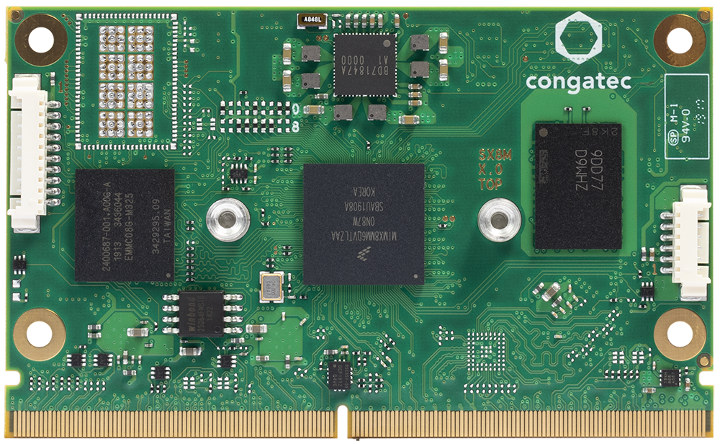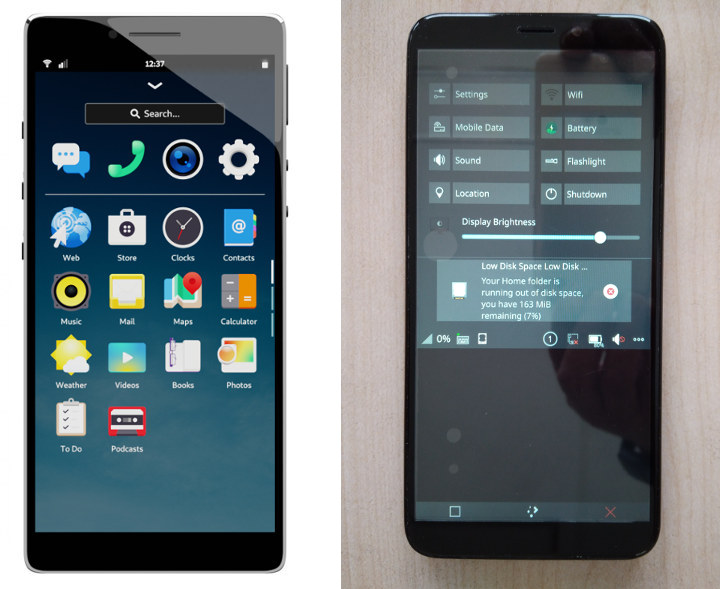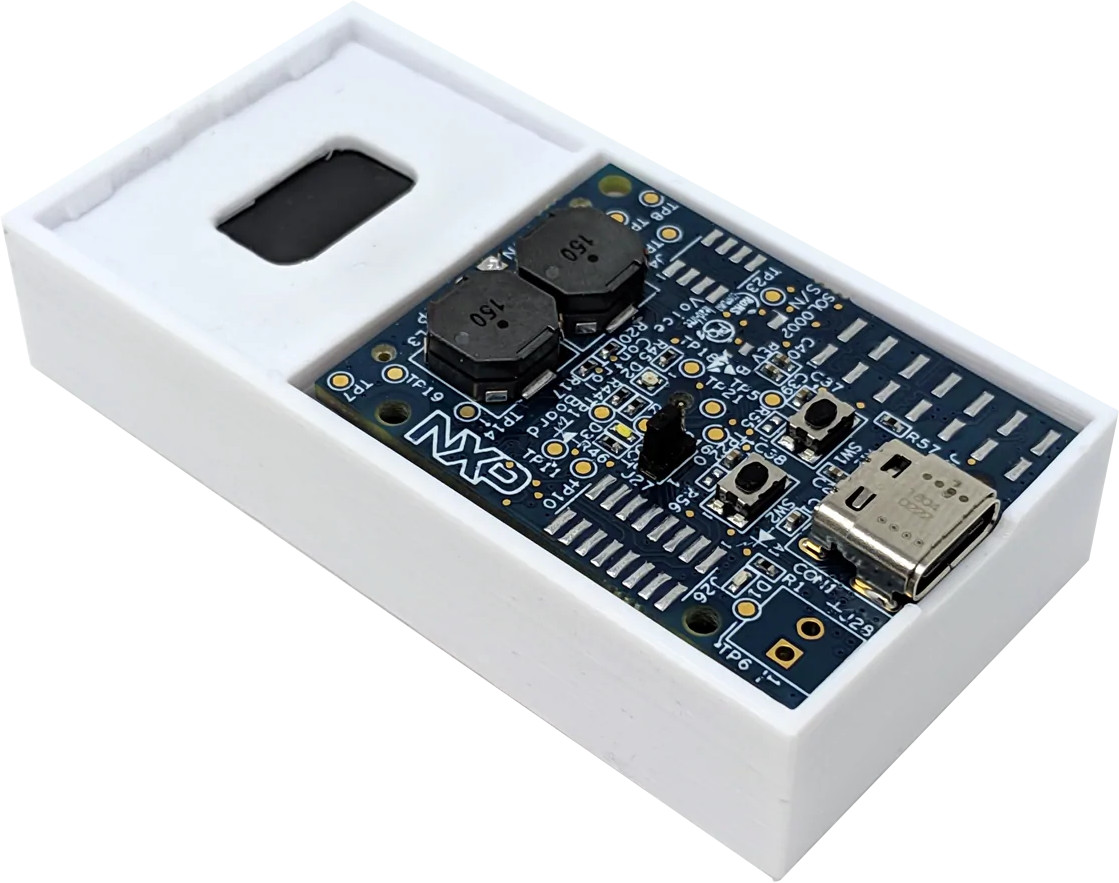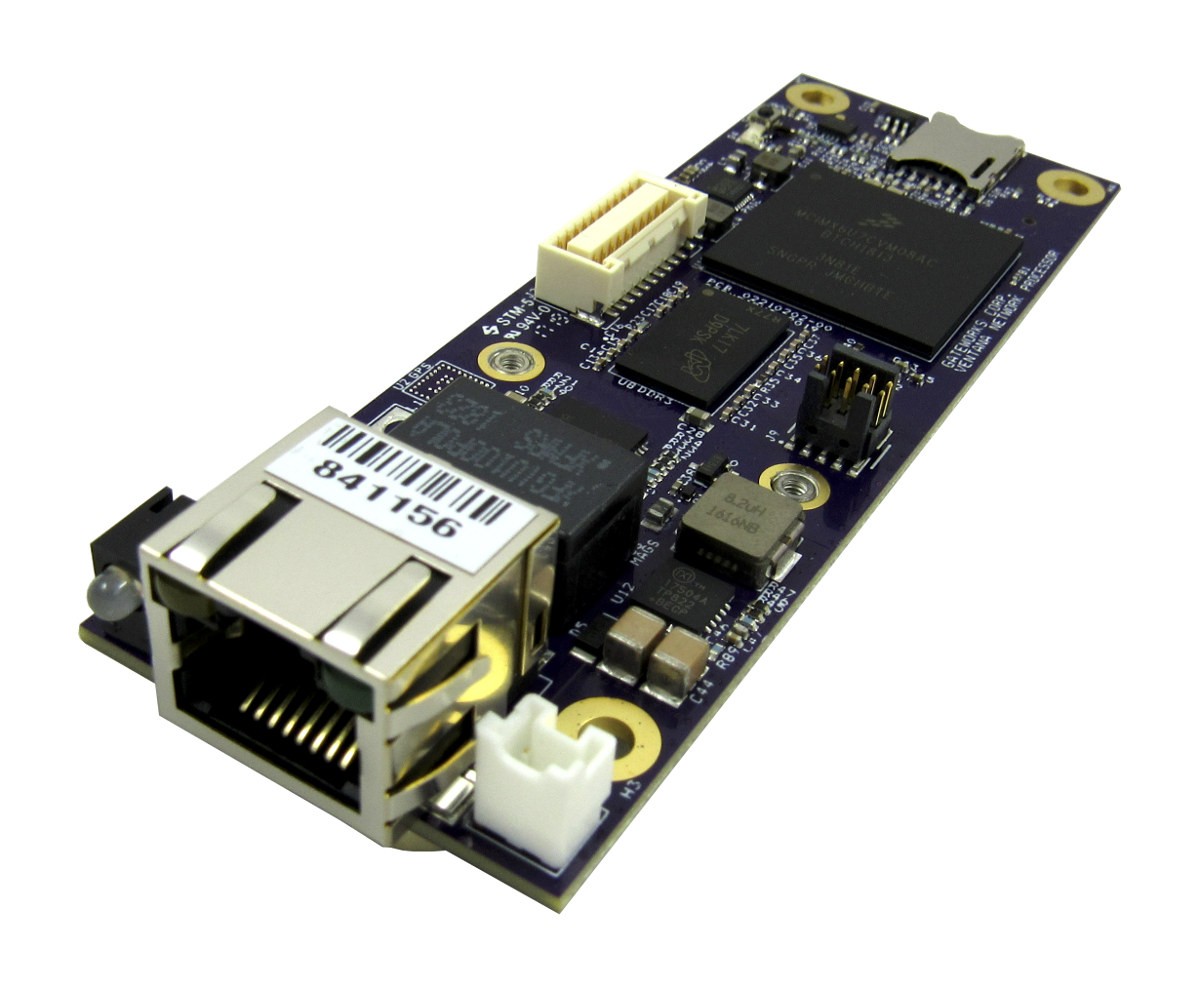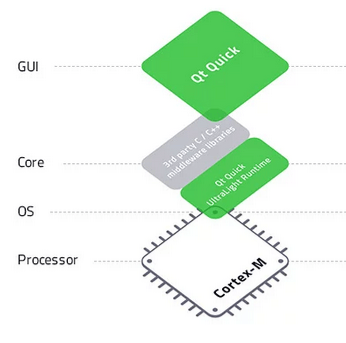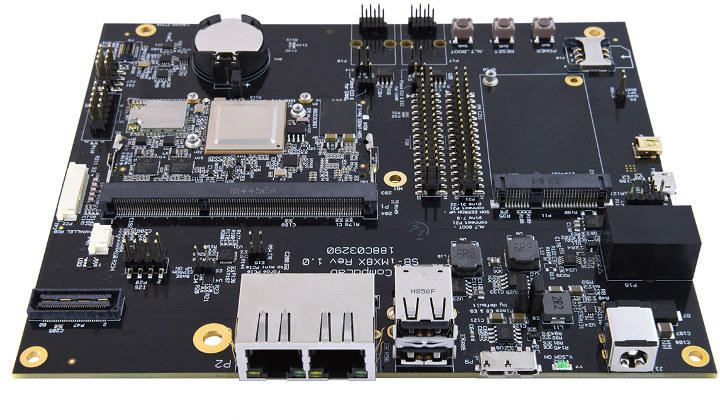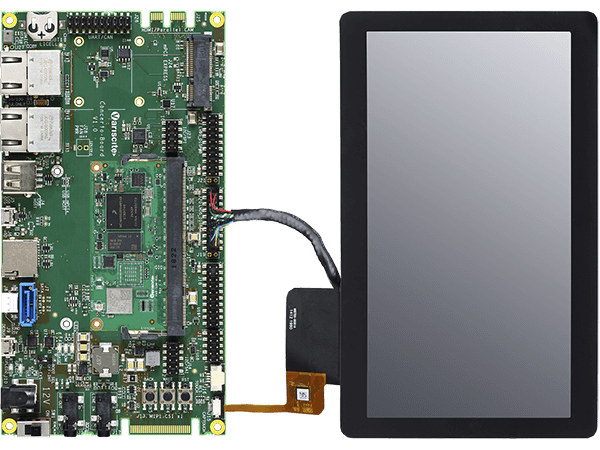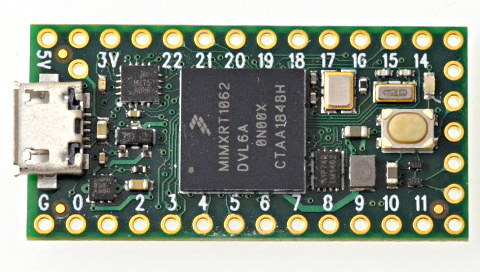NXP i.MX 8M Mini is the first i.MX processor from the company to be manufactured using a 14nm process, which enabled a higher 2.0 GHz frequency for the Cortex-A53 cores. While it was announced in 2018, the first systems-on-module were launched earlier this with products such as iWave System’ iW-RainboW-G34M-SM, TechNexion Axon Flex modules, F&S Elektronik Systems PicoCore-MX8MM, or CompuLab UCM-iMX8M-Mini among many others. So far, we had no covered any SMARC 2.0 compatible system-on-module based on the new NXP processor, but some companies had already launched such modules including Embedian and Avnet. Congatec has now joined them with the launch of conga-SMX8-Mini SMARC 2.0 system-on-module which builds on the company’s earlier conga-SMX8 i.MX 8 module. conga-SMX8-Mini SoM specifications: SoC (one or the other) NXP i.MX 8M Mini Quad with 4x Arm Cortex-A53 @ 1.8 GHz, 1x Arm Cortex-M4 @ 400MHz, GC NanoUltra 3D GPU, GC328 2D Graphics NXP i.MX […]
Librem 5 & Pinephone Linux Smartphones to Launch This Fall
There are too highly anticipated Linux smartphones currently in development namely Purism Librem 5 and Pine64 Pinephone. The first one, based on NXP i.MX 8M processor is fairly pricey ($699) partly because of better specifications, but mostly because the company handles software development internally, while Allwinner A64 Pinephone has somewhat lower specifications, but a much lower $150 price tag as software development is done by the community. Neither phones are available, and until a few days ago there were no clear launch dates. This has now changed as Purism announced Librem 5 would start shipping on September 24, while Pinephone first batch is scheduled for mid-October, which should also be the date for the launch of pre-orders, and shipment will start in November. This sounds great, but be warned the first phones will be for enthusiasts who do not mind having a few defects and missing hardware/software features, and the […]
NXP i.MX RT106F & RT106A/L Cortex-M7 Processors Target Offline Face Recognition & Smart Audio Applications
NXP i.MX RT crossover processors combine real-time capabilities of microcontrollers with the performance of application processors thanks to an Arm Cortex-M7 core clocked at 528 MHz and more. The performance is indeed impressive as shown by Teensy 4.0 benchmarks, but so far NXP i.MX RT processor targeted general purpose applications. The company has now introduced three new crossover processors designed for AI applications. NXP i.MX RT106F is designed for offline face recognition and expression Identification, while RT106L and RT106A are made for local and cloud-based embedded voice applications. NXP i.MX RT106F Processor Highlights of the processor: CPU – Arm Cortex-M7 @ 600 MHz (3020 CoreMark/1284 DMIPS) Memory – 1 MB On-Chip SRAM plus up to 512 KB configurable as Tightly Coupled Memory (TCM) External memory interface options – NAND, eMMC, QuadSPI NOR Flash, and Parallel NOR Flash Real-time, low-latency response as low as 20 ns Industry’s lowest dynamic power with […]
Gateworks GW5913 Compact NXP i.MX 6 SBC Supports PoE, GPS and 4G LTE Cellular Connectivity
Gateworks has announced a new Ventana SBC similar to their GW5530 board with 4G LTE connectivity, as GW5913 single board computer follows the same factor, and supports 4G LTE connectivity via mPCIe cards, but it replaces the microSIM card slot by a nanoSIM card socket, and adds a Gigabit Ethernet port with 802.11at PoE support. Gateworks GW5913 specifications: SoC – NXP i.MX 6Dual dual-core Arm Cortex-A9 processor @ 800MHz System Memory – 512MB DDR3-800 SDRAM Storage – 256MB Flash, serial configuration EEPROM Connectivity Gigabit Ethernet with PoE support Optional 4G LTE via high-power (up to 8W) Gen2 Mini-PCIe socket with USB 2.0 and nanoSIM socket Optional u-blox GPS Receiver with MMCX or U.FL Antenna Connector Expansion Connector – USB, UART, I2C, DAC, DIO Misc – Real-Time Clock with battery backup, voltage and temperature monitor, programmable watchdog timer Power Supply – 8 to 60VDC input voltage range via 2-pin power connector […]
Qt for MCUs – Qt Announces support for Microcontrollers
[Update August 24, 2019: Added information about expected release date and license] About Qt for MCUs Qt- The well known opensource toolkit for creating graphical interface announced their new release: Qt for MCUs, targeting MCU’s. The new graphical toolkit will be capable of running on devices without operating system. This may be a game changer in the entire MCU world, since Qt for MCUs allows developers to create fluid user interfaces on cost-effective micro controllers. This means we will be able to see smartphone like GUI’s which are running on low-end MCU’s with limited resources. With reference to their press release, assuring that Qt-GUI will consume less power to save the battery life. Qt for MCUs Software Stack While developing any applications for MCU, developers still can use their powerful declarative UI language QML and rich set of ready-made Qt Quick controls. And the C++ APIs, helps the user interface […]
Compulab CL-SOM-iMX8X SoM & SBC Feature NXP i.MX 8QuadXPlus Quad Core Cortex-A35 Processor
NXP i.MX 8X Cortex-A35 processor designed for automotive infotainment and a variety of industrial applications was officially announced in early 2017 with three parts: i.MX 8QuadXPlus with four Cortex-A35 cores, a Cortex-M4F core, a 4-shader GPU, a multi-format VPU and a HiFi 4 DSP i.MX 8DualXPlus with two Cortex-A35 cores, a Cortex-M4F core, a 4-shader GPU, a multi-format VPU and a HiFi 4 DSP i.MX 8DualX with two Cortex-A35 cores, a Cortex-M4F core, a 2-shader GPU, a multi-format VPU, and a HiFi 4 DSP In 2018, several companies unveiled i.MX 8X systems-on-module including Toradex Colibri iMX8X and Phytech phyCORE-i.MX 8X, and the processor was launched at the end of that year. There’s now another option with Compulab introducing CL-SOM-iMX8X module powered by NXP i.MX 8QuadXPlus processor, as well as SBC-IMX8X single board computer fitted with the module. CL-SOM-iMX8X System-on-Module Key features and specifications: SoC – NXP i.MX 8QuadXPlus quad-core Arm […]
Variscite VAR-SOM-6UL System-on-Module Supports NXP i.MX 6UltraLite, i.MX 6ULL, or i.MX 6ULZ ARM Cortex-A7 Processor
Variscite has just announced the launch of the VAR-SOM-6UL System-on-Module (SoM) powered by a choice of NXP’s i.MX 6UltraLite / 6ULL / 6ULZ Arm Cortex-A7 processor clocked at up to 900MHz CPU clock and based on the company earlier DART-6UL module while integrating an additional LVDS bridge option, all packed in SO-DIMM200 form factor to fit the VAR-SOM Pin2Pin family. The module is optimized for power, size, and cost, and supports dual Ethernet, dual USB, audio, CAN Bus, camera, optional single or dual-band WiFi, Bluetooth BLE, Touch, ADC, PWM, as well as support for industrial temperature grades with -40 to 85°C range. Variscite VAR-SOM-6UL specifications & key features: SoC – NXP i.MX 6UltraLite / 6ULL / 6ULZ ARM Cortex-A7 with optional security features up to 900MHz CPU Clock with 2D Pixel acceleration engine System Memory – Up to 1024 MB DDR3L Storage – 512 MB NAND / 64 GB eMMC […]
Teensy 4.0 Launched for $20 with a Much Faster NXP i.MX RT1062 Arm Cortex-M7 Processor
We last wrote about Teensy boards in 2016 for the launch of Teensy 3.5 & 3.6 boards powered by NXP Kinetis K64/K66 Arm Cortex-M4 microcontroller, and a longer form factor. Paul Stoffregen has now upped the ante with Teensy 4.0 featuring a much more powerful NXP i.MX RT1062 Cortex-M7 cross-over processor clocked at 600 MHz, and going back to the original, and more compact, form factor of earlier Teensy boards such as Teensy 3.2. Teensy 4.0 hardware specifications: SoC – NXP i.MX RT1062 Arm Cortex-M7 processor at 600 MHz with 1024KB RAM (512KB is tightly coupled), Storage – 2048KB serial flash (64KB reserved for recovery & EEPROM emulation) USB – 1x micro USB port for power and programming Expansion via through-holes and pads USB – 2x USB ports, both 480 MBit/sec Storage – 1x SDIO (4 bit) native SD Audio – 2x I2S Digital Audio, 1x S/PDIF Digital Audio Serial […]


